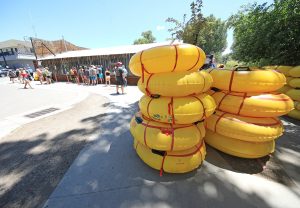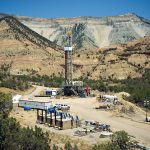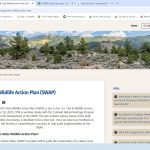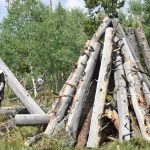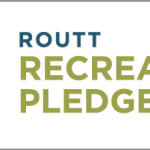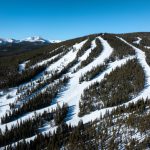Sweetwater Lake isn’t a state park yet, and it may never be
The latest on the project to turn a local gem into a state-managed asset
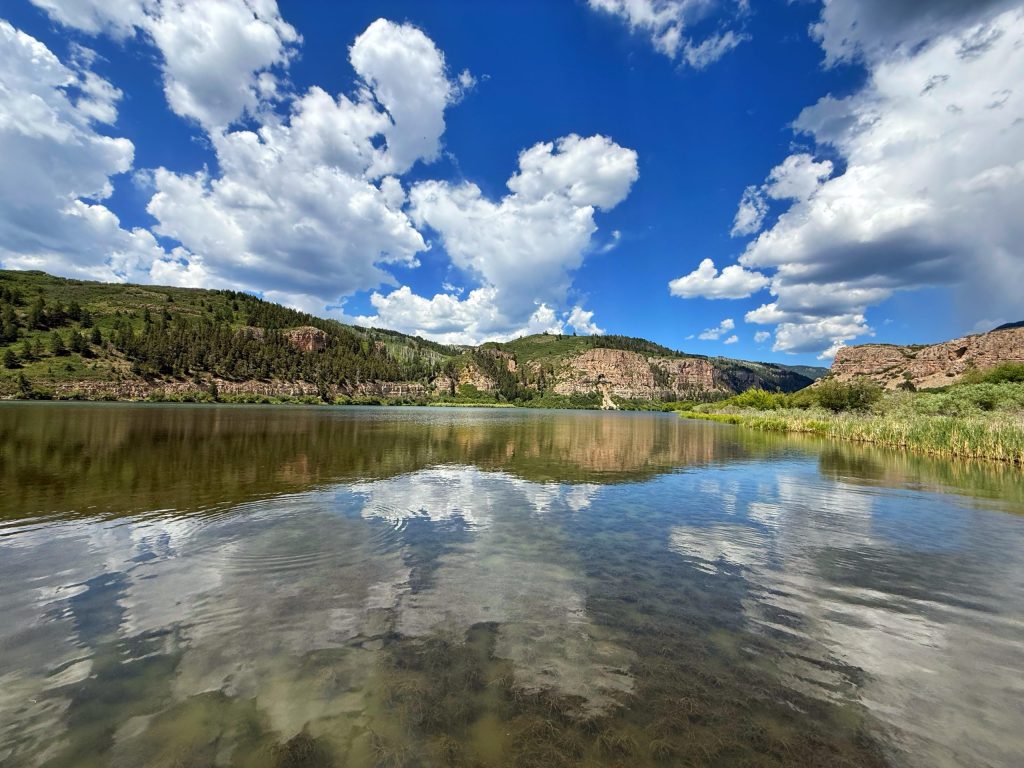
Ali Longwell/Vail Daily
The battle over the identity and future of Sweetwater Lake wages on as federal workforce turnovers temporarily stall the project’s National Environmental Policy Act process and Colorado works to address the concerns of the local community.
The U.S. Forest Service — using funds from the federal Land and Water Conservation Fund and local fundraising efforts — acquired the property in 2021. Shortly after, Gov. Jared Polis announced that the state would be entering into a unique partnership with the federal agency to transform Sweetwater Lake into Colorado’s 43rd state park.
The 488-acre property, nestled in a remote corner of Garfield County, currently contains limited opportunities for horseback riding, fishing, hiking and camping. While community members fought to transition the property from private ownership, they continue to seek a middle ground between its current rustic charm and a heavily-marketed state asset.
While the lake is part of the White River National Forest, the current proposal would place management under Colorado Parks and Wildlife. In addition to the state and federal entities, the town of Gypsum, as well as Eagle and Garfield counties, are named as cooperating agencies for the project.
After hosting a variety of stakeholder meetings in 2022 and 2023, the agencies kicked off a National Environmental Protection Act process in May 2024 with the publication of a notice of intent for the Environmental Impact Statement. The public scoping period that followed garnered over 100 substantive comments, according to Mark Lehman, the Parks and Wildlife park manager assigned to Sweetwater Lake. Lehman gave a presentation on Sweetwater Lake at the agency’s June commissioner meeting.
The NEPA process has since been stalled by changes at the federal level.
“Our federal government has been completely upended,” Lehman said, adding that the White River National Forest is down by at least 30% of its staff as it also transitions to a new forest supervisor, Brian Glaspell.
Marcia Gilles, Eagle County’s Open Space and Natural Resources director, said “the workforce reductions and things of that nature kind of shook things up at the beginning of the year,” forcing a pause in the planning process.
“We’re just kind of on hold right now, and hoping to restart those conversations,” Gilles said.
What’s being proposed at Sweetwater Lake?
The current proposal for Sweetwater Lake would allow for between 15 to 20 campsites, parking spaces, an outfitter (specifically the stable and equestrian facility that exists on site today), cabin rentals, a visitor center and a day use area, according to Lehman. This is based on what was included in the May 2024 proposed action.
“Our focus with Sweetwater is to provide a scaled-back opportunity by limiting the density of day-use parking and camping so that it’s not a shoulder-to-shoulder, congested opportunity,” Lehman said.
Some improvements have already been initiated on the site since the Forest Service’s acquisition.
The federal agency has led tribal consultation to preserve cultural resources on the property, including a Ute cave with pictographs. The goal, Lehman said, is to craft a management plan to share this resource with the public while preventing further degradation.
The Forest Service is also consulting with the Colorado Historic Preservation Office to create a plan for the site’s historic structures, including cabins that are between 50 and 100 years old. Lehman said the structures are in “various states of disrepair,” and the agencies are working to figure out “how do we retain some structures and tell the story of the site” while dealing with the “health hazards and the expense of trying to rehabilitate or restore some of these structures.”
Parks and Wildlife has also begun to facilitate the installation of an upgraded water system on the site, Lehman said.
What’s in a name?
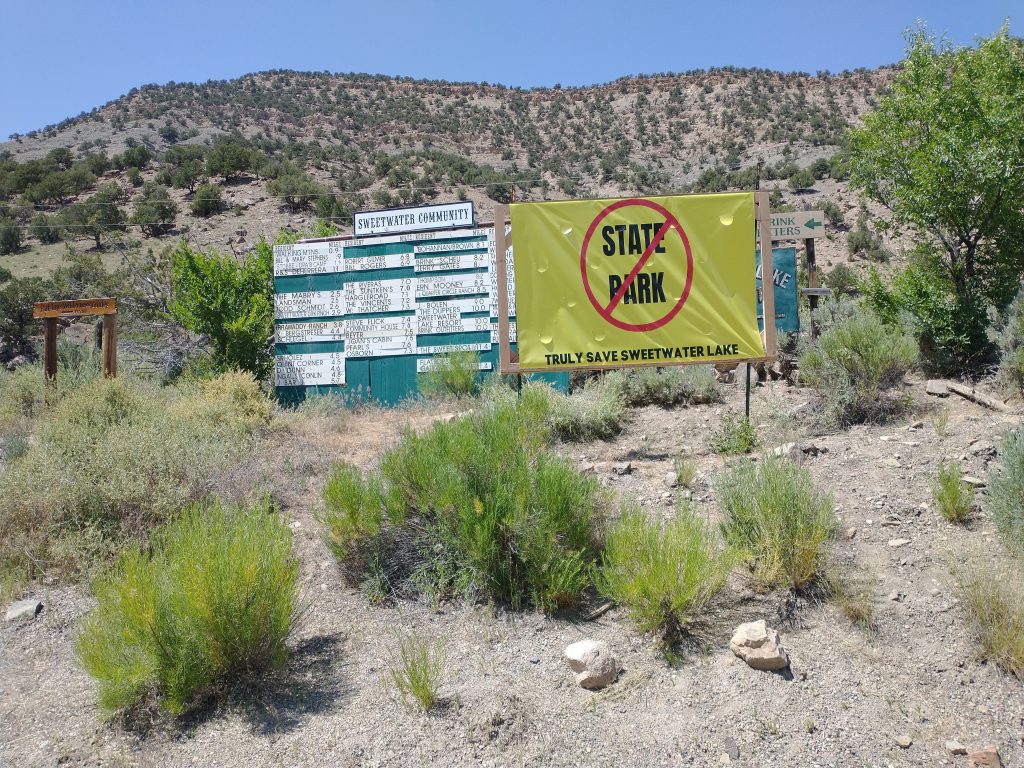
Bright yellow signs still line the county roads leading to Sweetwater Lake, opposing its designation as a state park.
“Truly Save Sweetwater Lake,” read many of the signs.
The state park announcement came as a surprise to community members, county officials, and other stakeholders who hoped to maintain the property’s current, low-impact level of use.
Derrick Wiemer, a long-time resident of Sweetwater, described the announcement as a “shot in the heart” in a July 2025 interview with the Aspen Times.
Wiemer is one of around 10 community members who actively serve on the Sweetwater Lake Working Group, which has represented the community in the property’s development since the initial fundraising efforts to “Save the Lake,” with the Eagle Valley Land Trust.
The group has collected over 1,000 signatures on a petition to stop it from becoming a state park.
“The planning/engagement process started off positive, however, after more than a handful of meetings, it became very obvious to the community that the meetings were a ‘show’ to allow the (Forest Service), CPW, and (Eagle Valley Land Trust) to say that they’ve been meeting with the public,” wrote the working group in a July email to the Aspen Times. “All meetings halted prior to NEPA being kicked off, communication has completely stopped between CPW, USFS, and unfortunately, our local entity of EVLT, who consistently sided with the USFS and CPW throughout all discussions.”
All of this has resulted in a loss of trust as the community aims to conserve the site’s most important qualities, the group wrote.
“This place needs to be kept special and not turned into a reservation system State Park site that is a loss to the local communities,” they said.
The community has had different ideas for the site’s future — from making it a primitive Forest Service site to returning it to its former status as a resort or making a small, state-run site. But the most pressing concerns include the potential impacts on safety, wildlife, the environment, the community and traffic driven by the proposed site development, size and volume of visitors.
Garfield County Commission Chair Tom Jankovsky said the concerns with the current proposal all have to do with size: “The number of campsites and number of visitors. What can that road handle and what can emergency services handle in such a remote location? And how do we not turn a tranquil community into a really busy summer tourist area?”
Jankovskksy was the lone Garfield commissioner who opposed the initial transfer of the property to the public trust.
Part of the concern comes with the name itself. With the title of “state park” comes a marketing engine that could put the site on the radar of a wider group of people
At its June meeting, Lehman said the team has “support from our executive management team to consider additional naming alternatives for the site.”
“It may not be Sweetwater Lake State Park when it’s all said and done,” Lehman added.
When asked what other potential names could be, Rachael Gonzales, Parks and Wildlife’s northwest regional public information officer, said the agency “is open to exploring various naming and designation options and does not have a specific naming convention in mind,” but did not give specifics.
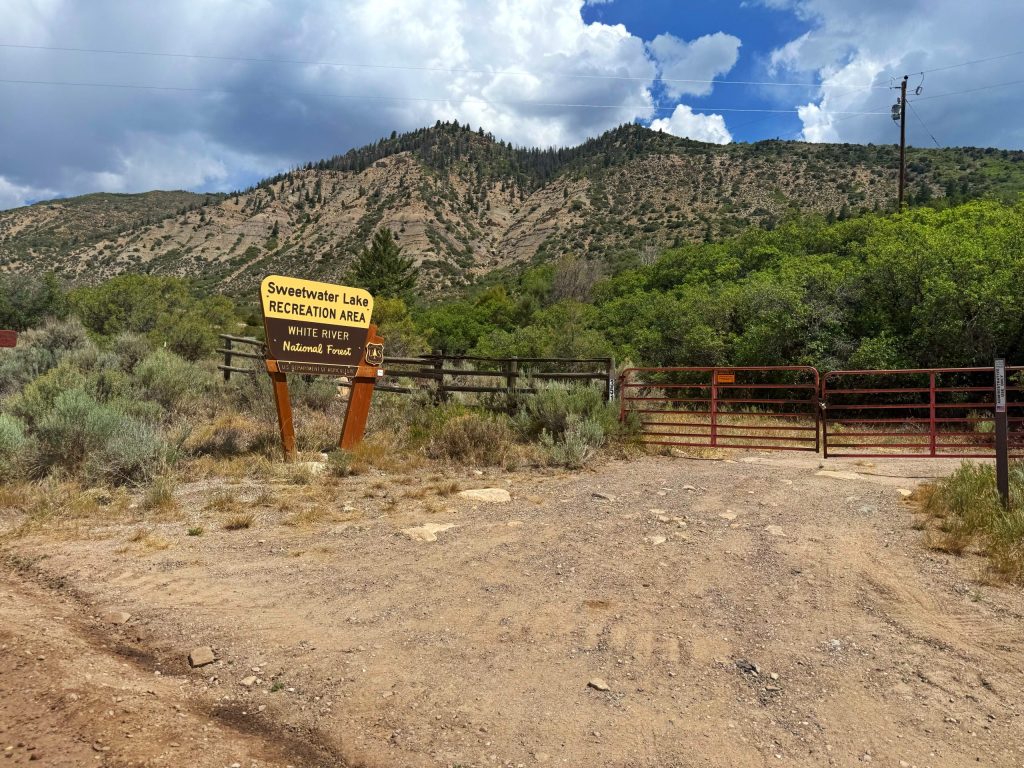
With any changes or name, the working group does not want to see the volume of use grow as currently proposed. In its response to the NEPA proposed action — which was prepared by Maria Summerlin, a Sweetwater community member and retired environmental consultant — the group claims that historic use on the site has been around 31 people a day during the peak season and when the cabins were operational. However, the proposal increases capacity to between 252 to 372 people a day, according to the response.
“The development plan rivaled or exceeded Sylvan Lake in all aspects,” wrote the working group in their email. “Many in our communities are familiar with Sylvan Lake and how it has lost a lot of ‘local charm’ since becoming a State Park … Anyone who has driven into the Sweetwater area can see that the roads and the box canyon should never try to support that level of visitation.”
The agencies have worked to provide “much more of a limited recreational opportunity” than what’s seen at Sylvan Lake, Lehman said.
One of the concerns is the impact increased traffic would have on the “10-mile narrow windy county road” that leads to Sweetwater Lake, Lehman said.
“It’s really easy to imagine a worst-case scenario where this place that’s meant so much to generations of families along that road is now being trampled by people from all over the place,” Lehman admitted. “That’s not the vision we have for the site, but that is some of the concern that they have.”
Lehman said the plan will attempt to mitigate this by providing a limited opportunity within the campground with site sizes that would limit the size of recreational vehicles and campers, but that this also comes with its challenges.
“The one exception, though, is that because Sweetwater has such a heavy equestrian focus, horse trailers are some of the biggest rigs on the road,” he said. “We want to make sure that remains a focus at Sweetwater, so we’re trying to walk this line of limiting one group and their opportunity while still providing an opportunity for another group that will bring rigs that are just as big, if not bigger, up that road.”
Additionally, Lehman said a “visitor use management plan” would be developed to “identify thresholds of use and then mechanisms that we can use to dial things back if needed and if we’re seeing impacts to the resource or to the visitor’s experience or additional negative impacts to the community that is impacted by the access to the site.”
Regardless of concerns and challenges ahead, Lehman said Parks and Wildlife is “positioned to provide the best recreational opportunity on site,” including one that is low impact.
“We have larger parks situated around the metropolitan area that can kind of subsidize different recreational experiences around the state and we’re not looking at jamming as many campsites or day-use parking spots into every property we can,” Lehman said. “We’re not creating (Sweetwater) to be a big money maker. So long as we’re not judging it on its ability to generate a profit or generate exorbitant revenue, we can do really good things there, but it could kind of fall to the back burner if it’s judged otherwise.”
Wiemer personally remains optimistic about finding a middle ground between what he described as a “cookie-cutter” state park approach and what exists today. He said that change is expected and inevitable, but that whatever happens needs to be done thoughtfully with input from the local community.
“With input from Garfield County as a cooperator and from Gypsum as a cooperator, and the community members, I think we can get to someplace where there is a compromise and a comfort level,” Jankovsky said.
What comes next for the property?
What comes next at Sweetwater Lake will follow the Forest Service resuming work with the cooperating agencies. From there, a draft environmental impact statement is expected in September, Lehman said. This would kick off another phase of public comment, where individuals can weigh in on the proposal and a range of design alternatives.
While a final decision is anticipated sometime next year, when it comes is anyone’s guess, Lehman said. From there, the Forest Service would determine what the future of Sweetwater Lake will be, including whether or not to grant Parks and Wildlife a permit to operate the site.
Addressing the ongoing concerns will be part of the process ahead.
“Ultimately, the (cooperating) agencies were confident in what was proposed, though it’s difficult to achieve full unanimity,” Lehman said, adding that there wasn’t 100% buy-in and that’s OK. “This isn’t a final plan. This is just something for the public to chew on, to provide comments on (through NEPA).”
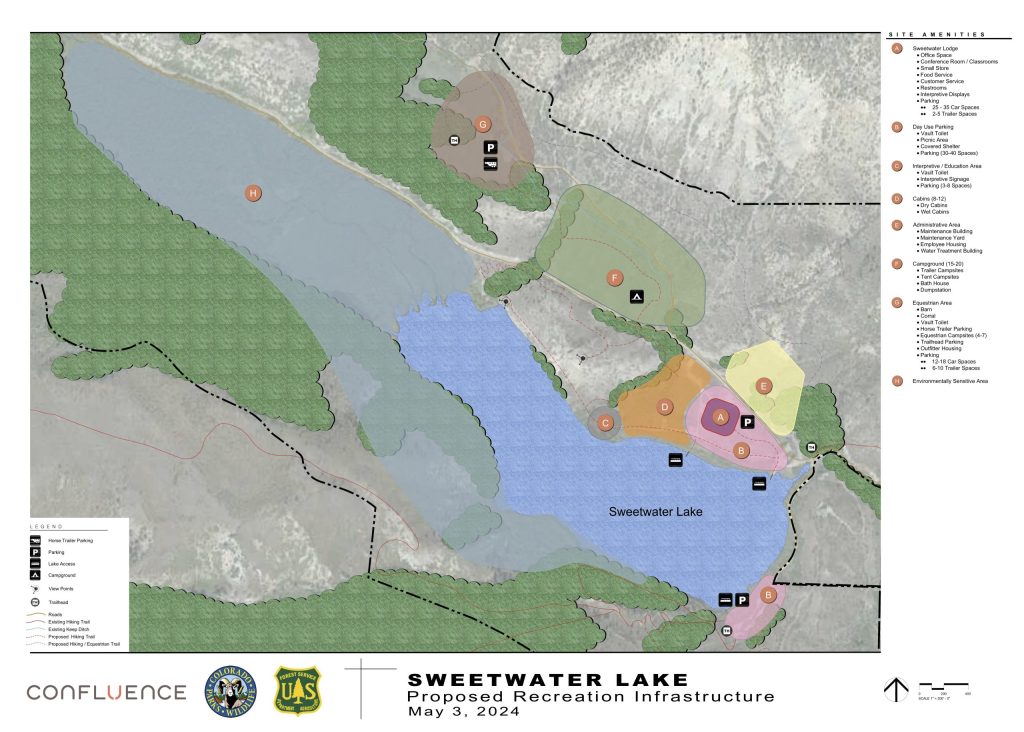

Support Local Journalism

Support Local Journalism
Readers around Steamboat and Routt County make the Steamboat Pilot & Today’s work possible. Your financial contribution supports our efforts to deliver quality, locally relevant journalism.
Now more than ever, your support is critical to help us keep our community informed about the evolving coronavirus pandemic and the impact it is having locally. Every contribution, however large or small, will make a difference.
Each donation will be used exclusively for the development and creation of increased news coverage.

